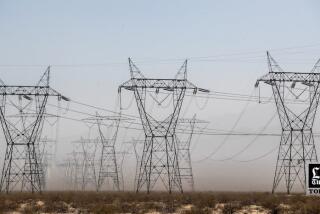Portion of Fusion Experiment Duplicated
- Share via
DALLAS — Texas researchers said Sunday they had apparently repeated a major portion of an experiment purported to create nuclear fusion at room temperature.
With scientists at nearly a dozen U.S. institutions working feverishly to verify the University of Utah experiment, researchers at Texas A&M; University could be the closest to duplicating the controversial work, said university spokesman Edward Walraven.
A news conference was scheduled in College Station, where the university is situated, for this morning to discuss the research.
Energy Claims
One of the Utah group’s most significant claims is that its fusion reaction produced more energy than it consumed from the battery that was used to start it.
“We have confirmed the most important part of their observations, which is excess heat (energy) generation,” Dr. Michael Hall, head of the Texas A&M; chemistry department, told United Press International.
“But we’re not sure what is going on yet,” he said. “Our measurements do not prove it is fusion yet.”
Dr. Charles Martin, leader of the Texas A&M; research team, said his group first made its observation Friday night. The process had been sustained for more than 40 hours by Sunday night and was continuing as scientists conducted tests in an effort to confirm a fusion reaction.
Observe Excess Heat
“That is the only observation that we have made, excess heat is generated in this chemical cell,” Martin said.
Asked if anything else could cause the observation, he said: “We cannot at this time completely dismiss the possibility of some unusual chemical reaction. That’s a remote possibility, though.”
Fusion, the energy source of the sun, comes from the joining of atomic nuclei. If it could be harnessed, researchers believe fusion promises a cheaper, safer alternative to the current power plants run with nuclear fission, the splitting of atoms.
The University of Utah announced on March 23 that researchers, in an experiment, had achieved fusion at room temperatures in a jar of water.






